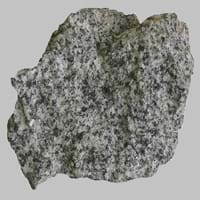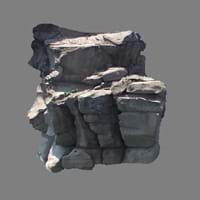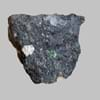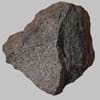Diorite and Comendite
Definition
Definition
Diorite is a grey to dark-grey intermediate intrusive igneous rock composed principally of plagioclase feldspar,biotite, hornblende, and pyroxene
Comendite is a hard, peralkaline igneous rock, a type of light blue grey rhyolite
History
Origin
Unknown
Italy
Discoverer
Unknown
Unknown
Etymology
From early 19th century coined in French, formed irregularly from Greek diorizein distinguish
Comendite derives its name from the area of Le Commende on San Pietro Island in Italy
Class
Igneous Rocks
Igneous Rocks
Sub-Class
Durable Rock, Hard Rock
Durable Rock, Hard Rock
Family
Group
Plutonic
Volcanic
Other Categories
Coarse Grained Rock, Medium Grained Rock, Opaque Rock
Medium Grained Rock, Opaque Rock
Texture
Texture
Phaneritic
Porphyritic
Color
Black, Brown, Light to Dark Grey, White
Blue, Bluish - Grey
Maintenance
Less
Less
Durability
Durable
Durable
Water Resistant
No
Yes
Scratch Resistant
No
Yes
Stain Resistant
No
Yes
Wind Resistant
Yes
Yes
Acid Resistant
No
Yes
Appearance
Shiny
Foliated
Uses
Architecture
Interior Uses
Decorative Aggregates, Interior Decoration
Countertops, Decorative Aggregates, Interior Decoration
Exterior Uses
As Building Stone, As Facing Stone, Garden Decoration
As Building Stone, As Facing Stone, Garden Decoration
Other Architectural Uses
Curbing
Curbing
Industry
Construction Industry
As Dimension Stone, Cement Manufacture, Cobblestones, Construction Aggregate, for Road Aggregate
Building houses or walls, Cement Manufacture, Construction Aggregate, for Road Aggregate, Landscaping, Making natural cement, Raw material for the manufacture of mortar
Medical Industry
Not Yet Used
Not Yet Used
Antiquity Uses
Artifacts, Monuments, Sculpture, Small Figurines
Artifacts
Other Uses
Commercial Uses
Creating Artwork, Curling
Cemetery Markers
Types
Types
Not Available
Rhyolite
Features
Typically speckled black and white.
Very fine grained rock, It is One of the Oldest, Strongest and Hardest Rock
Archaeological Significance
Monuments
Used
Not Yet Used
Famous Monuments
Data Not Available
Not Applicable
Sculpture
Used
Not Yet Used
Famous Sculptures
Data Not Available
Not Applicable
Pictographs
Not Used
Not Used
Petroglyphs
Not Used
Not Used
Figurines
Used
Not Yet Used
Fossils
Absent
Absent
Formation
Formation
Diorite is a coarse-grained intrusive igneous rock which contains large interlocking and randomly oriented crystals and forms when molten lava does not reach the Earth’s surface and cools down in the Earth’s crust.
Comendite is a type of Igneous rock which is formed due to cooling and solidification of lava or magma. It may form with or without crystallization, either below the surface as intrusive rocks or on the surface as extrusive rocks.
Composition
Mineral Content
Albite, Amphibole, Apatite, Biotite, Feldspar, Hornblade, Ilmenite, Magnetite, Muscovite or Illite, Olivine, Plagioclase, Pyroxene, Quartz, Sulfides, Titanite, Zircon
Albite, Amphibole, Quartz
Compound Content
Silicon Dioxide
Al, Fe, Potassium Oxide
Transformation
Metamorphism
Yes
Yes
Types of Metamorphism
Cataclastic Metamorphism, Contact Metamorphism, Regional Metamorphism
Cataclastic Metamorphism, Regional Metamorphism
Weathering
Yes
Yes
Types of Weathering
Biological Weathering, Chemical Weathering, Mechanical Weathering
Biological Weathering, Chemical Weathering, Mechanical Weathering
Erosion
Yes
Yes
Types of Erosion
Chemical Erosion, Coastal Erosion, Water Erosion
Coastal Erosion, Water Erosion
Properties
Physical Properties
Hardness
6-7
6-7
Grain Size
Medium to Coarse Grained
Medium Grained
Fracture
Not Available
Pervasive
Streak
Bluish Black
Bluish Black
Porosity
Very Less Porous
Highly Porous
Luster
Shiny
Dull
Compressive Strength
225.00 N/mm2
7
92.40 N/mm2
21
Cleavage
Not Available
Not Available
Toughness
2.1
2
Specific Gravity
2.8-3
2.38
Transparency
Opaque
Opaque
Density
2.8-3 g/cm3
Not Available
Thermal Properties
Resistance
Heat Resistant, Pressure Resistant, Wear Resistant
Heat Resistant, Impact Resistant
Reserves
Deposits in Eastern Continents
Asia
Not Yet Found
China
Africa
Egypt
East Africa
Europe
Finland, Germany, Italy, Romania, Sweden, Turkey, United Kingdom
Italy
Others
Not Yet Found
Not Yet Found
Deposits in Western Continents
North America
USA
Not Yet Found
South America
Argentina, Bolivia, Chile, Colombia, Ecuador, Peru
Not Yet Found
Deposits in Oceania Continent
Australia
New Zealand, Western Australia
Queensland
All about Diorite and Comendite Properties
Know all about Diorite and Comendite properties here. All properties of rocks are important as they define the type of rock and its application. Diorite and Comendite belong to Igneous Rocks.Texture of Diorite is Phaneritic whereas that of Comendite is Porphyritic. Diorite appears Shiny and Comendite appears Foliated. The luster of Diorite is shiny while that of Comendite is dull. Diorite is available in black, brown, light to dark grey, white colors whereas Comendite is available in blue, bluish - grey colors. The commercial uses of Diorite are creating artwork, curling and that of Comendite are cemetery markers.
|
||
|
||
|










